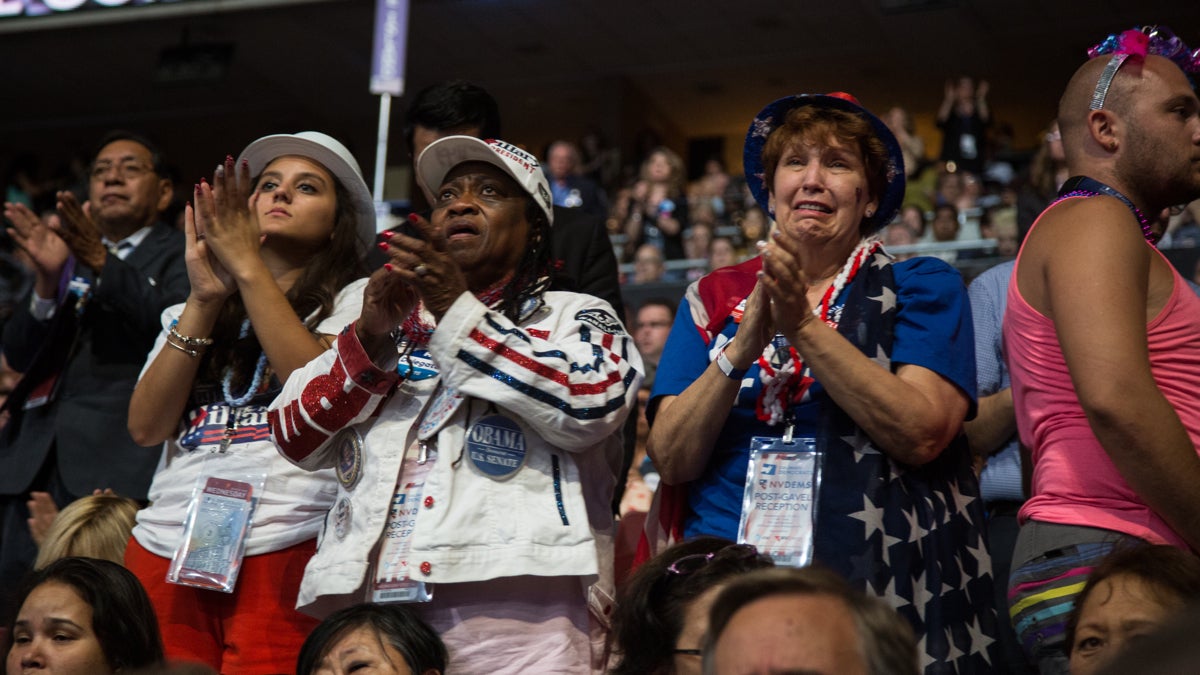In battleground state, Pa. voter registration shows women lean heavily Democratic
Listen
Delegates get emotional during speeches at the 2016 Democratic National Convention. (Emily Cohen for NewsWorks)
Since 1980, women across the country have voted for Democrats at a higher rate than men have.
How much higher fluctuates from election to election — but its persistence has earned it a name: the “gender gap.”
The Pennsylvania Department of State does not regularly post party registration statistics by gender, but recently did share that information with NewsWorks. Those numbers show this trend holds in the battleground state and could have an impact in November.
First, women flat-out vote at a higher rate than men across the country. In Pennsylvania, registration numbers reflect that pattern will likely continue.
As of August, 53 percent of all registered Pennsylvania voters who disclosed their gender were women. The figure is in line with voter registration and turnout by gender in past election cycles, according to Franklin & Marshall College political pollster Terry Madonna.
Susan Carroll, scholar at the center for American Women in Politics at Rutgers, said in general the voting bloc of women is growing.
“In 2012, almost 10 million more women than men voted nationally,” she said.
With that in mind, courting women voters is important for any candidate, said Madonna.
“It’s very significant,” he said. “More women vote than men, and if you win a higher proportion of women voters generically, you’re going to be better off.”
Secondly, female voters in the commonwealth are much more likely to be registered Democrats. Fifty-four percent of those women who disclosed their gender were registered as Democrats, compared with 36 percent registered as Republicans.
In Pennsylvania, that difference is echoed in the demographic profile of those who support Hillary Clinton and Donald Trump, said Madonna.
“Clinton does very well with women, particularly single women, college-educated women. Trump does particularly well with men, men who don’t have college education,” he said. Those trends also split the vote by region, with Trump holding down more support in the southwestern and northeastern corners of the state, and Clinton’s base concentrated in urban and suburban areas including the Delaware and Lehigh valleys.
While all of Pennsylvania’s voter registration numbers are in keeping with voting arcs of the last 35 years, there is one new factor that could tweak the gender gap: a major-party female nominee.
“So there’s the possibility of not just a kind of gender gap in the way people vote,” said Carroll, “but also pro-woman or anti-woman voting.”
Surveys of voter attitudes showing the number of people who express sentiments against voting for a woman on the basis of gender are going down, she said.
With the election just under three months away, new polls are giving Clinton the edge in Pennsylvania, which before had been designated a tossup.
WHYY is your source for fact-based, in-depth journalism and information. As a nonprofit organization, we rely on financial support from readers like you. Please give today.

